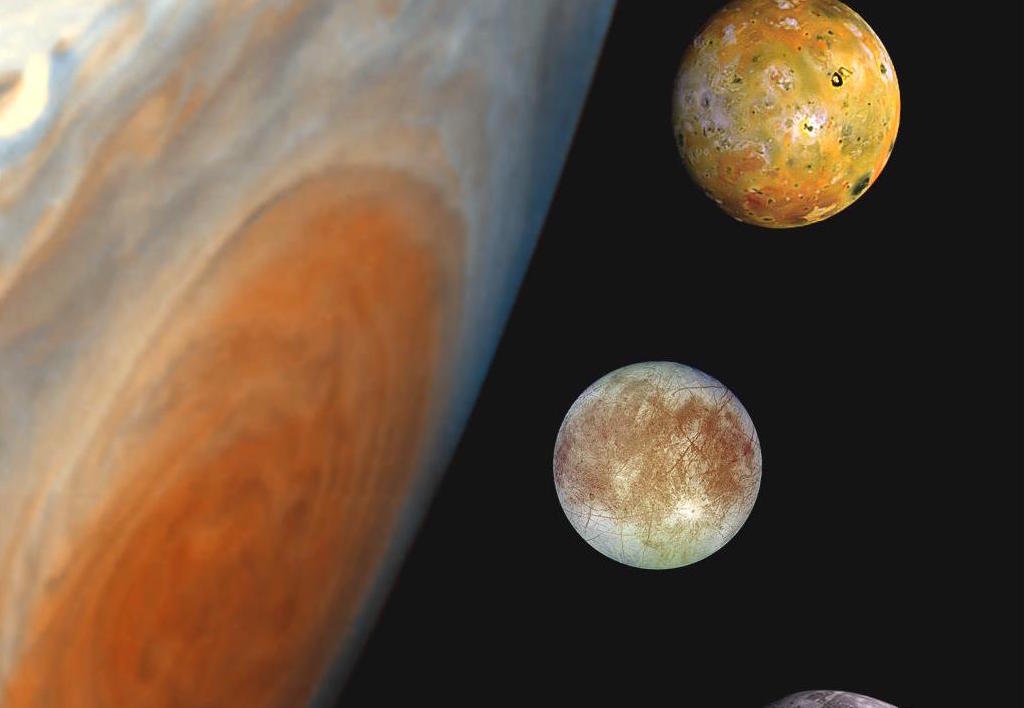Jupiter Juice launch: Everything to know about mission to see whether solar system could support alien life

Your support helps us to tell the story
From reproductive rights to climate change to Big Tech, The Independent is on the ground when the story is developing. Whether it's investigating the financials of Elon Musk's pro-Trump PAC or producing our latest documentary, 'The A Word', which shines a light on the American women fighting for reproductive rights, we know how important it is to parse out the facts from the messaging.
At such a critical moment in US history, we need reporters on the ground. Your donation allows us to keep sending journalists to speak to both sides of the story.
The Independent is trusted by Americans across the entire political spectrum. And unlike many other quality news outlets, we choose not to lock Americans out of our reporting and analysis with paywalls. We believe quality journalism should be available to everyone, paid for by those who can afford it.
Your support makes all the difference.The European Space Agency is about to launch Juice.
As well as being one of the most unusually named spacecraft ever to launch, it is also intended to shed light on our neighbouring planet and its satellites – and whether they could be a home for aliens.
The name stands for Jupiter Icy Moons Explorer and that is exactly what it will do. After eight years of travel, it will fly around the Jovian system, examining the planet and its moons to understand them better.
Much of that work will be about finding whether those moons might be habitable for alien life. The three moons that Juice will examine are all thought have substantial amounts of water under their surfaces, which could make them a potential home for alien life in our solar system.
When and what is the launch?
On 14 April, at 1.15pm UK time, an Ariane 5 rocket will carry will Juice up into space from the European Space Agency’s spaceport in French Guiana.
That launch had been originally scheduled for 13 April. But it was postponed for a day when worries about lightning led its engineers to fear that the spacecraft might not be safe if it launched.
How long will it take to get to Jupiter – and how long will it stay there?
A long time: Juice won’t arrive near Jupiter until 2031. It will spend some of he time until then gathering the energy needed to traverse the vast distances: flying by Earth and the Moon, as well as Venus, using their gravity to assist its journey, and it will pass through the asteroid belt.
When it does finally arrive at Jupiter, it will start journeying around the Jovian system of the planet and its Moons, beginning a mission that will last for the next few years.
It will first start by flying past Ganymede, which will help reduce its energy to better allow for it to explore Jupiter. It will then move into Ganymede’s orbit – the first time a spacecraft has orbited any moon that’s not our own – and start exploring that world.
The first observations should start to arrive in 2032. The first images from flybys of Jupiter and Ganymede are expected in February, though it is not yet known exactly in the year when the first scientific data will arrive.
Then the mission will come to a close when Juice is directed to destroy itself by smashing into Ganymede’s surface in 2035.
(ESA notes that this might change if Juice finds that Ganymede is actually habitable. It says it will then follow rules that require the planet to be protected.)
What will it do once it gets there?
Juice has 11 different scientific instruments – from equipment that can penetrate deep under a moon’s surface to others that can study their gravity fields – that it will carry to those distant worlds.
It will use them all to scan Jupiter, Ganymede and other moons, in an attempt to understand what the conditions are like there and whether they might be habitable.
Juice can’t actually detect life. It can only detect the kind of conditions that would suggest that a planet could support life: whether it has water, and the required biological elements, and so on.
Join our commenting forum
Join thought-provoking conversations, follow other Independent readers and see their replies
Comments